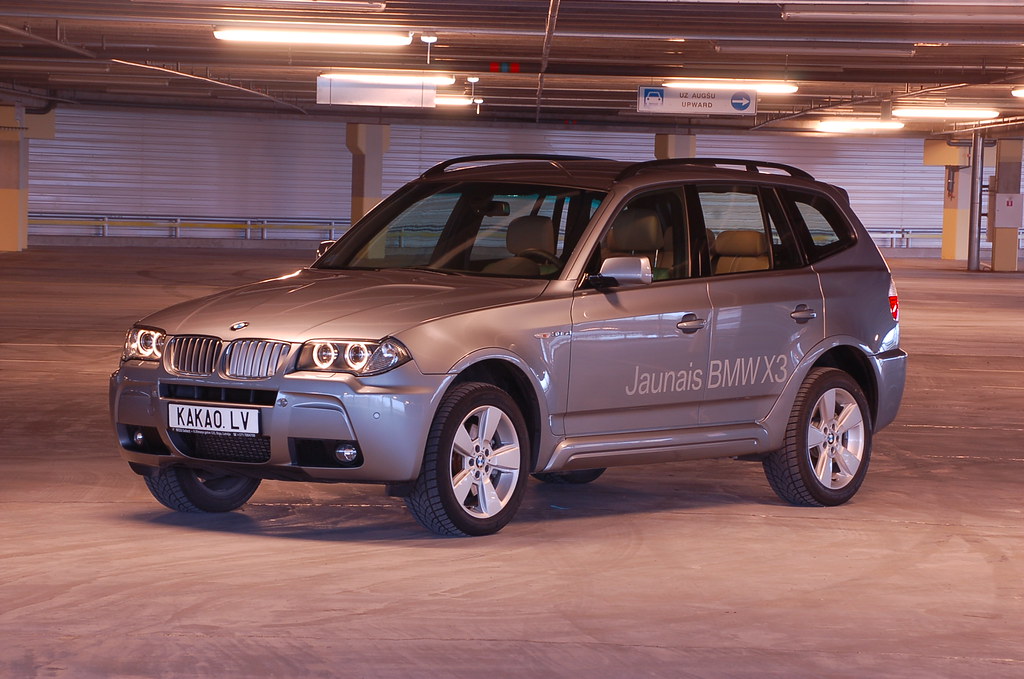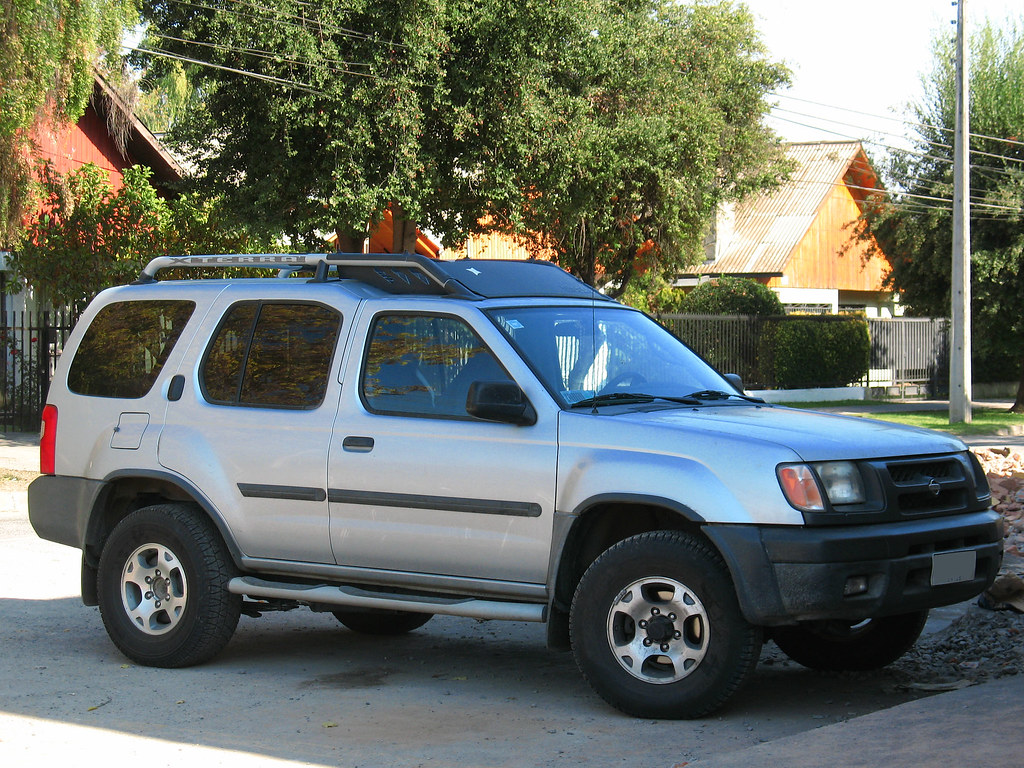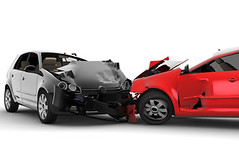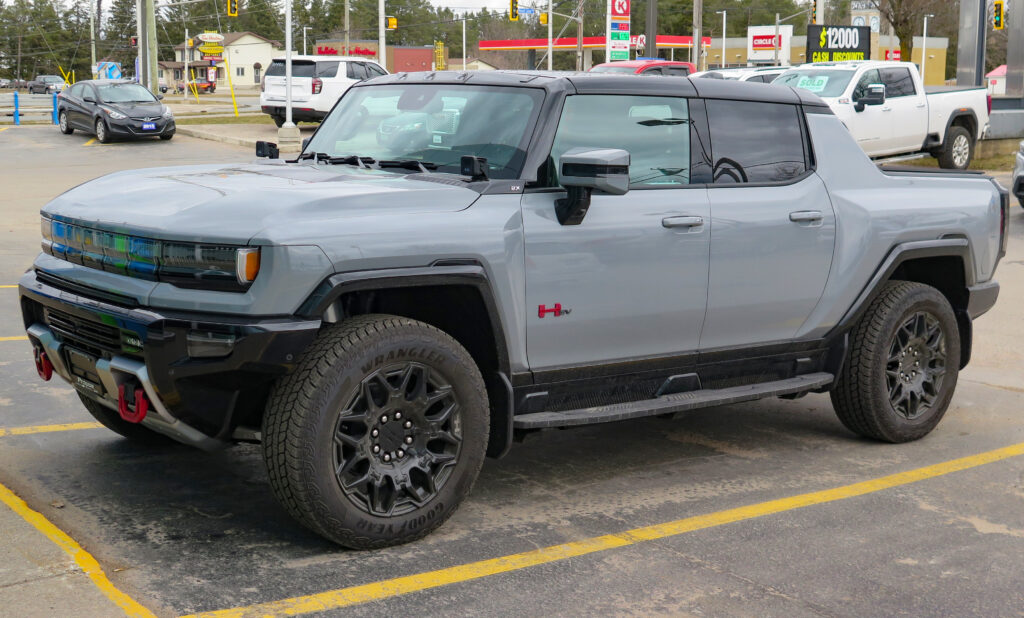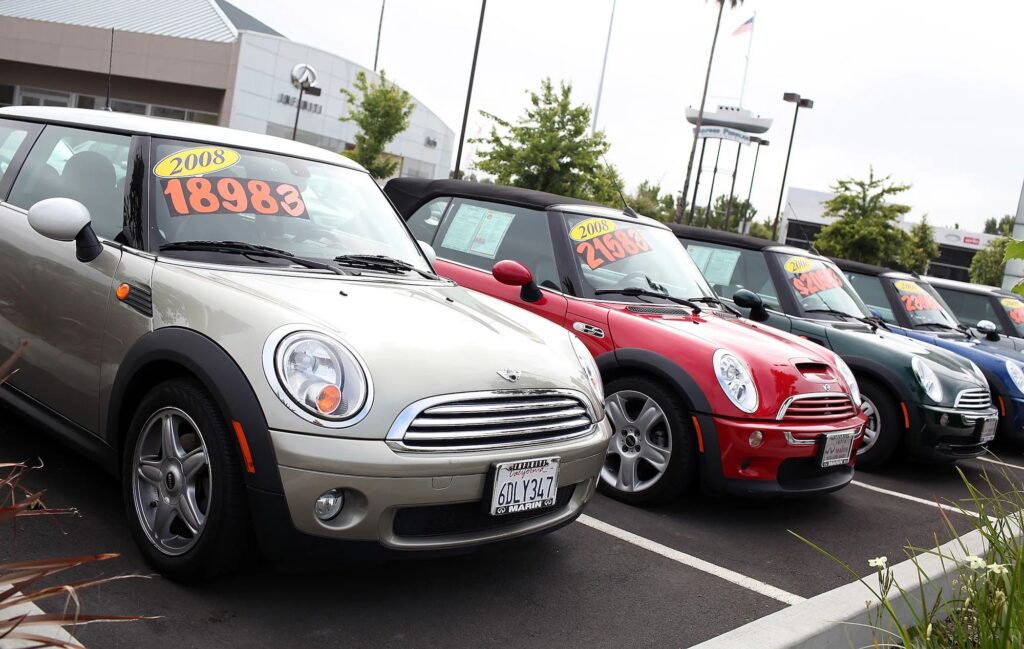
The allure of a used car is undeniable, promising significant savings upfront compared to a brand-new model. However, beneath the polished surface and attractive price tags, a used vehicle can harbor hidden pitfalls, transforming what seems like a smart financial move into a relentless drain on your bank account. Too many hopeful buyers, swayed by aesthetics or brand reputation, later find themselves grappling with frequent repairs, hard-to-find parts, or unexpected mechanical failures that quickly erode any initial savings.
To help navigate this often treacherous landscape, we’ve consulted with the ultimate experts: seasoned auto mechanics. These professionals, who spend every week diagnosing and repairing vehicles, have unique insights into which models consistently rack up huge bills for their owners. By diving deep into comprehensive reliability reports, scrutinizing customer reviews, and sifting through mechanics’ forums, we’ve compiled a definitive list of vehicles that prove to be more trouble than they’re worth in the long run, ensuring you’re empowered with actionable advice for making informed purchasing decisions.
This article aims to cut through the marketing hype and common misconceptions, focusing on cars with consistent patterns of expensive failures. These aren’t isolated incidents, but rather systemic issues that make certain models an almost guaranteed source of financial stress and frustration. As Greg Damon, host of KMOX’s “At Your Service” and winner of the 2007 Ultimate Golden Mechanic Award, advises, buyers should look beyond the badge and carefully research each option. Here, we present the first seven vehicles that mechanics and automotive pros would unequivocally avoid buying for themselves—and why.
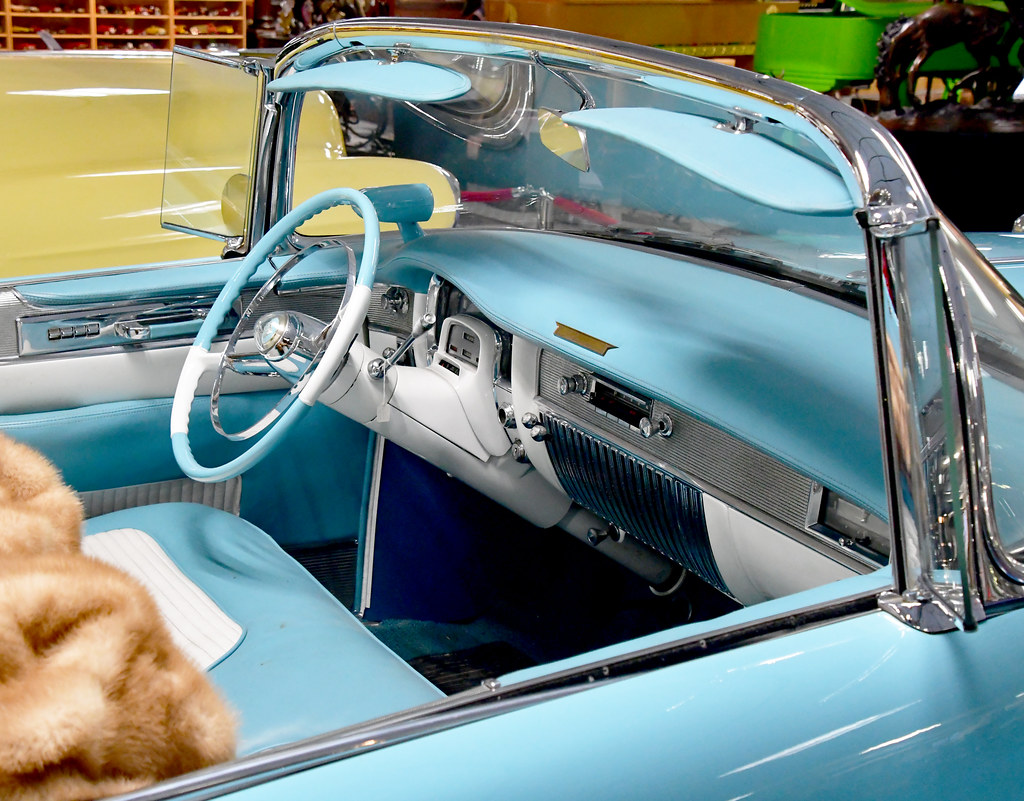
1. **Cadillac**For many mechanics, the answer to which car to unequivocally avoid buying used is remarkably clear: Cadillac. Ben Mirecki of CarPages states that the brand consistently ranks at the very bottom of reliability lists. He notes, “In the most recent list of the most reliable cars by Consumer Reports, Cadillac was dead last and it consistently ranks in the bottom two or three, year after year.” This isn’t an anomaly, but a long-standing pattern that should give any prospective buyer pause.
Mirecki further claims that Cadillacs are often “prettier in the driveway than they are reliable on the road.” This aesthetic appeal masks a deeper layer of mechanical fragility, characterized by “massive chronic problems coupled with various suspension issues.” These are not minor inconveniences but significant systemic flaws that require extensive and often complex repairs, quickly diminishing the luxury experience for owners.
Beyond the frequent breakdowns, Cadillac ownership comes with other substantial drawbacks. Owners face the challenge of “limited and expensive spare parts,” meaning repairs can be delayed while components are sourced, and the final bill is often significantly higher than for more common vehicles. The brand’s notorious “turning circle of a boat” may seem like a minor issue, but it contributes to a less than ideal driving experience that only adds to the ownership frustrations.
Ultimately, a used Cadillac, despite its initial perceived value or luxury appeal, is likely to become a financial burden due to its poor reliability, high repair costs, and the difficulty in sourcing specialized parts. Mechanics understand that the prestige doesn’t translate into dependability.
Read more about: Stephen King’s Unconventional Top 10: Deconstructing the Master of Horror’s All-Time Favorite Films
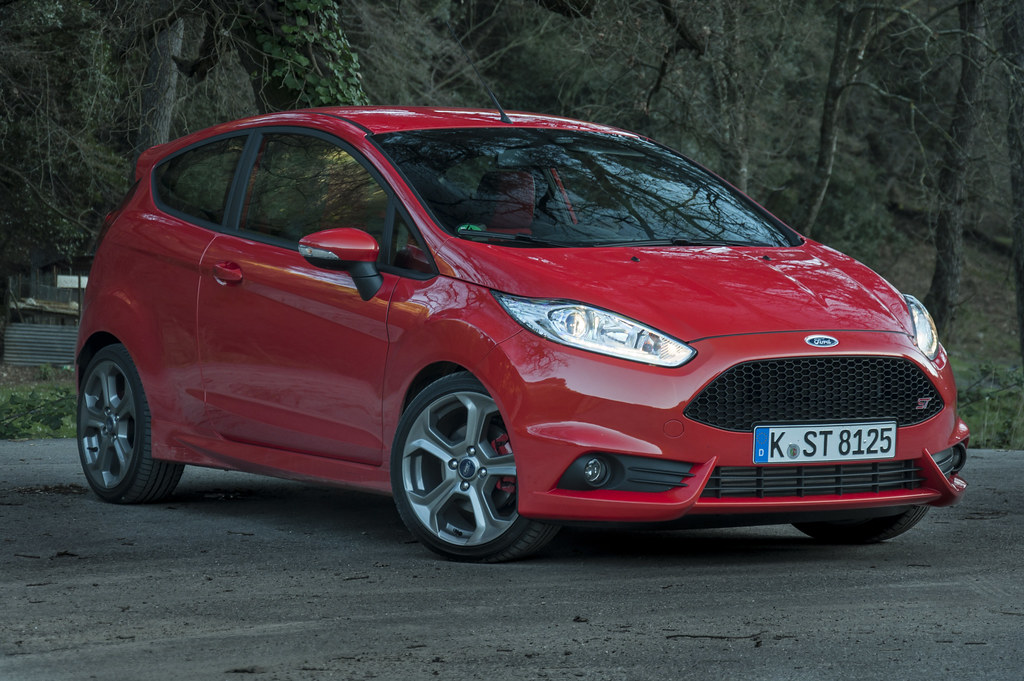
2. **Ford Fiesta**The Ford Fiesta, particularly models from 2011 to 2016, stands out as a vehicle mechanics universally advise against, primarily due to its notoriously problematic PowerShift automatic transmission. Sean Pour, co-founder of SellMax, a nationwide car buying service, emphatically states, “The number one vehicle I would not purchase is the Ford Fiesta.” His company has taken in hundreds of these cars with documented transmission failures, some with as few as 40,000 miles on the odometer.
The PowerShift dual-clutch system is less of an engineering marvel and more of a mechanical headache. Owners frequently report issues ranging from jerky shifts and hesitation to complete clutch failures, leading to a driving experience that can be best described as agricultural. Pour highlights the severity by noting, “Some of our customers have replaced the transmission [on their Ford Fiesta] more than once before it hit 100,000 miles!” This recurring problem transforms the Fiesta from an affordable compact car into a relentless money pit.
Beyond the transmission, the Fiesta’s electrical system is also prone to glitches, adding to the frustration of ownership. The overall build quality often leaves much to be desired, with flimsy interior materials that wear out quickly and an impression that quality control was an afterthought. These issues, combined with its infamously low resale value, mean that while the initial purchase price might be low, the long-term cost of ownership is unexpectedly high.
For mechanics, the Fiesta’s frequent and expensive transmission repairs are so predictable that they’ve earned a legendary status among automotive disasters. It’s a clear example of a car that doesn’t just break down, but does so with an artistic commitment to timing its failures for maximum inconvenience and financial strain on its owner.
Car Model Information: 2014 Ford Fiesta SE
Name: Ford Fiesta
Manufacturer: Ford Motor Company
Production: June 1976 – July 2023
Class: Supermini
BodyStyle: hatchback
Layout: Front-engine, front-wheel-drive layout
Successor: Ford Puma (crossover)
ModelYears: 1978–1980, 2011–2019 (North America)
Categories: 1980s cars, 1990s cars, 2000s cars, 2010s cars, 2020s cars
Summary: The Ford Fiesta is a supermini car that was marketed by Ford from 1976 to 2023 over seven generations. Over the years, the Fiesta has mainly been developed and manufactured by Ford’s European operations, and had been positioned below the Escort (later the Focus).
Ford had sold over 15 million Fiestas from 1976 to July 2011, making it one of the best-selling Ford nameplates behind the Escort and the F-Series. It has been manufactured in the United Kingdom, Germany, Spain, Brazil, Argentina, Venezuela, Mexico, Taiwan, China, India, Thailand, and South Africa.
The Fiesta was discontinued in 2023, after over 22 million units had been made. The final Ford Fiesta rolled off the production line on 7 July 2023.
Get more information about: Ford Fiesta
Buying a high-performing used car >>>
Brand: Ford Model: Fiesta
Price: $6,998 Mileage: 75,861 mi.
Read more about: From Showroom Shine to Garage Grind: 15 Vehicles That Left Owners Longing for a Refund
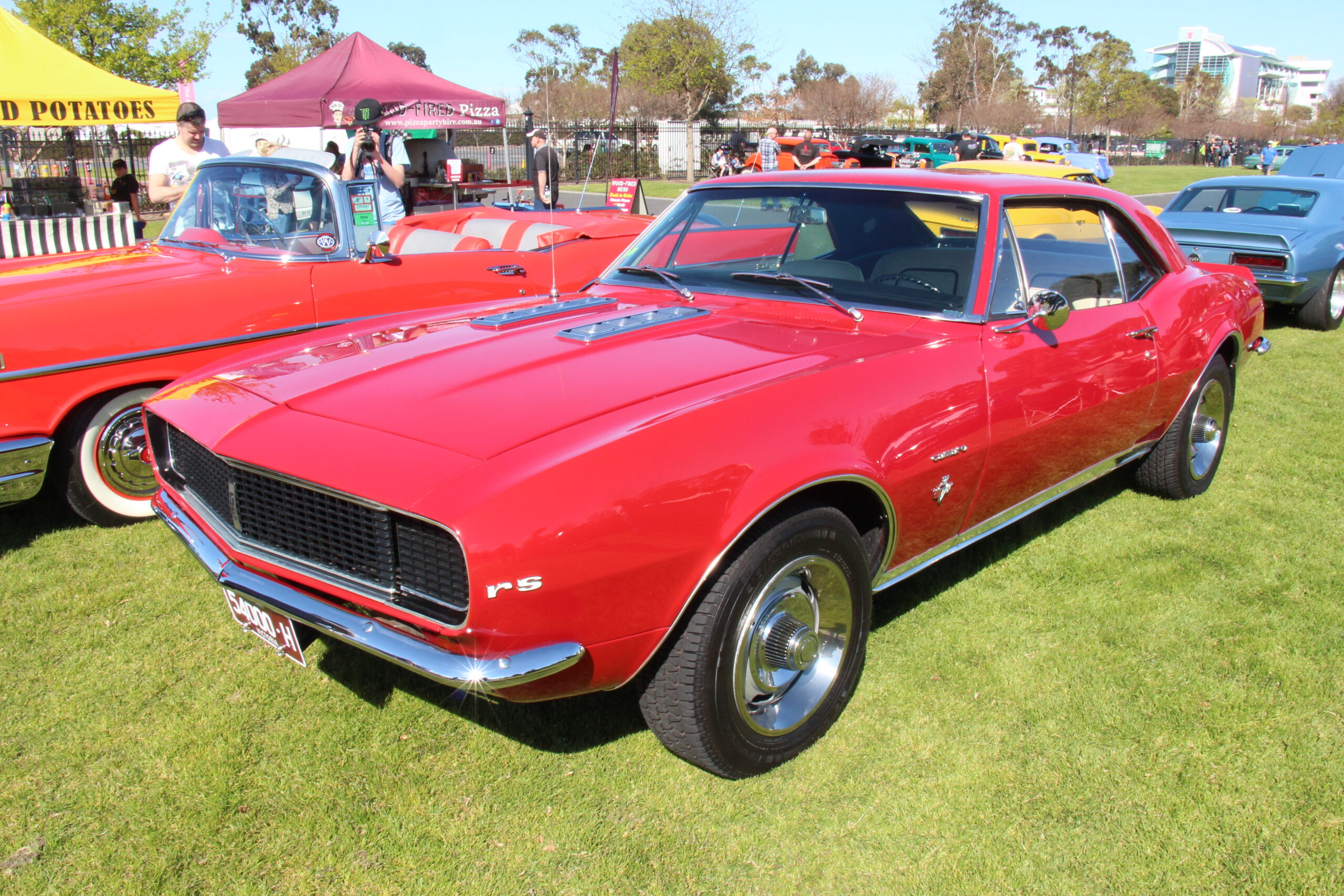
3. **Chevrolet Camaro**The Chevrolet Camaro, once a symbol of American muscle, has unfortunately lost significant ground against its rivals, leading GM to pull the plug on the vehicle by 2022. This decision, as noted by Deepesh Chauhan of Car Indigo, underscores the significant issues plaguing the sports car, making it a questionable choice for any used car buyer seeking reliability and value.
One of the most immediate financial drawbacks of a used Camaro is its rapid depreciation. Chauhan points out that the sports car “loses nearly 45 percent of its value in the first two years.” For a used car shopper, this means that even if you acquire one at a significantly reduced price, its value will continue to plummet, making it a poor investment and potentially harder to sell down the line if further issues arise.
The depreciation is compounded by a litany of mechanical problems frequently reported by owners. Chauhan cites “faulty steering column wiring, early coolant leaks, engine blowing off, and plenty of other severe issues.” These aren’t minor nuisances; they are critical failures that can lead to expensive repairs and compromise vehicle safety. The prospect of an engine blowing off, for example, represents a catastrophic failure that could cost more than the car’s remaining value to fix.
Considering the combination of rapid value loss and a documented history of severe mechanical faults, mechanics like Chauhan would actively avoid purchasing a Camaro for themselves. The ongoing risk of costly repairs and the diminished resale potential make it a vehicle that promises more headaches than thrills for the used car market.
Car Model Information: 2018 Chevrolet Camaro 1LS
Name: Chevrolet Camaro
Manufacturer: Chevrolet
Production: 1966–2002,2009–2023
ModelYears: 1967–2002,2010–2024
Class: Pony car
BodyStyle: coupe,convertible
Platform: GM F platform,GM Zeta platform,GM Alpha platform
Layout: Front-engine, rear-wheel-drive layout
Categories: 1970s cars, 1980s cars, 1990s cars, 2+2 coupés, 2000s cars
Summary: The Chevrolet Camaro is a mid-size American automobile manufactured by Chevrolet, classified as a pony car. It first went on sale on September 29, 1966, for the 1967 model year and was designed to compete with the Ford Mustang. The Camaro shared its platform and major components with the Firebird, produced by General Motors’ Pontiac division that was also introduced for the 1967 model year.
Four distinct generations of the Camaro were developed before production ended in 2002. The nameplate was revived on a concept car that evolved into the fifth-generation Camaro; production started on March 16, 2009.
Production of the sixth generation of the Camaro ended in December 2023, for the 2024 model year.
Get more information about: Chevrolet Camaro
Buying a high-performing used car >>>
Brand: Chevrolet Model: Camaro
Price: $19,125 Mileage: 69,196 mi.
Read more about: Unpacking the Past: 14 Vintage Car Features Modern Driving Left Behind (And Why We Miss Them)
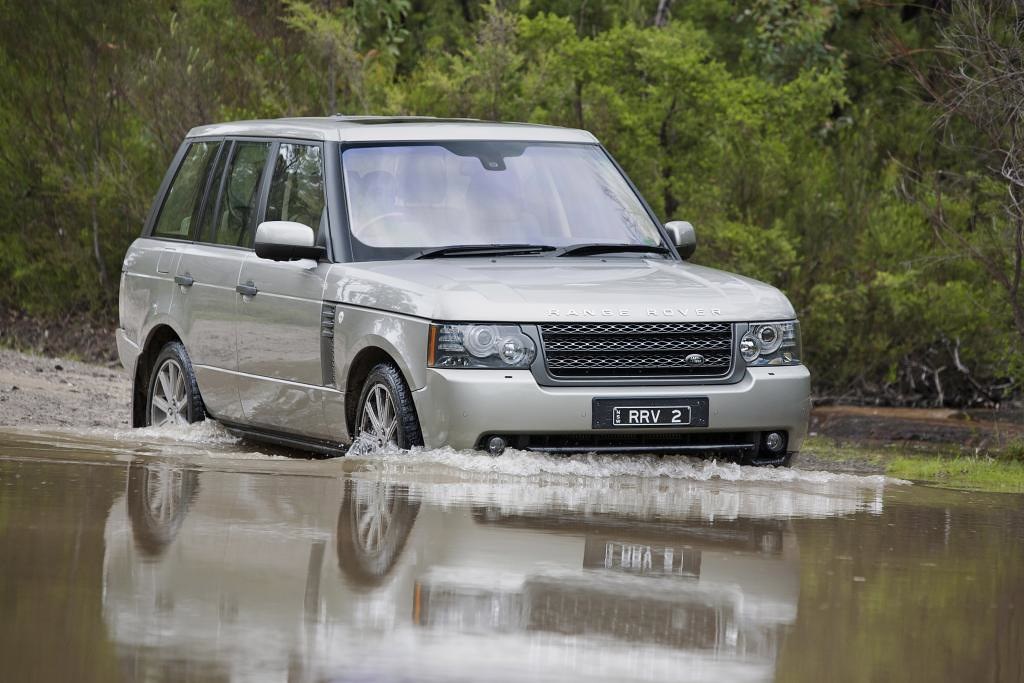
4. **Land Rover Range Rover**The Land Rover Range Rover, renowned for its luxury and off-road prowess, harbors a dark secret: a notorious track record for poor reliability and exorbitant maintenance costs. Jake McKenzie of Auto Accessories Garage notes that it “is notorious for having frequent mechanical problems and above-average repair costs.” This reputation is widely echoed across online forums, where owners actively warn prospective buyers to “expect the unexpected,” including persistent check-engine lights and strange noises.
One of the most significant and expensive recurring problems stems from its sophisticated air suspension system. This system, which operates on its own unpredictable schedule, can decide that the vehicle should squat like a very expensive toad, often failing dramatically in public spaces. As experts like Greg Damon confirm, European luxury vehicles, like the Range Rover, come with high parts prices and intricate diagnostics that often demand dealership-level expertise, making repairs a specialized and costly affair.
Beyond the air suspension, the Range Rover is plagued by persistent engine and electronic failures. These issues, whether a minor leak or a complex electrical malfunction, can quickly escalate into immense repair bills. The cost to insure these vehicles is also substantially higher than the national average, solidifying its status as “one of the biggest money pits in the automotive world,” according to McKenzie.
Owners of used Range Rovers often find themselves in a double bind: facing rapid depreciation that eats away at their investment, coupled with unexpected, high-cost repairs that frequently force them to sell the vehicle, regardless of its pristine appearance. It’s a luxury experience that often comes with a continuous, hefty bill for mechanical suffering.
Car Model Information: 2019 Subaru Outback 3.6R Limited
Caption: 2022 Range Rover SE P440e (L460, fifth generation, United Kingdom)
Aka: unbulleted list
Name: Range Rover
Manufacturer: unbulleted list
Production: 1969–present
Assembly: unbulleted list
Class: unbulleted list
Layout: Front-engine, four-wheel-drive layout
Sp: uk
Categories: 1980s cars, 1990s cars, 2000s cars, 2010s cars, 2020s cars
Summary: The Land Rover Range Rover, generally shortened to Range Rover, is a 4WD luxury mid to full size crossover marque and sub-brand of Jaguar Land Rover, owned by India-based Tata Motors. The Range Rover line was launched in 1970 by British Leyland and since 2022 is in its fifth generation.
Additional models have been launched under the Range Rover name, including the Range Rover Sport, Range Rover Evoque, and Range Rover Velar.
Get more information about: Range Rover
Buying a high-performing used car >>>
Brand: Land Rover Model: Range Rover
Price: $21,995 Mileage: 77,376 mi.
Read more about: Unpacking the Past: 14 Vintage Car Features Modern Driving Left Behind (And Why We Miss Them)
5. **BMW X3**The BMW X3, an SUV often admired for its blend of performance and luxury, carries a significant hidden cost in the used car market. Deepesh Chauhan of Car Indigo highlights one of its most critical downsides: severe depreciation. He states, “The value depreciates as much as 70 percent of the MSRP in just 5 years,” making it an extremely poor investment for anyone hoping to retain value.
Beyond the rapid loss of value, the X3’s sophisticated engineering translates directly into complex and expensive repairs. Chauhan explains, “Due to the sophisticated electronics on-board, the X3 can’t be easily repaired by your mechanic in your neighborhood, either.” This necessitates taking the vehicle to specialized BMW service centers, which charge premium rates for their expertise and diagnostic equipment.
Sourcing replacement parts for the X3 is another significant challenge that contributes to its high cost of ownership. These specialized components are not only expensive but can also be difficult to acquire quickly, leading to longer repair times and increased inconvenience. What might be a routine fix for a less complex vehicle becomes a tricky and costly endeavor for the X3.
For a used car buyer seeking reliability and predictable expenses, the BMW X3 presents a formidable challenge. Its combination of steep depreciation, complex electronics requiring specialized attention, and costly parts makes it a vehicle that, once out of warranty, can quickly become a financial burden, prompting owners to sell it quickly even if at a considerable loss.
Car Model Information: 2020 BMW X3 PHEV xDrive30e
Name: BMW X3
Manufacturer: BMW
Production: 2003–present
Class: Compact luxury crossover SUV
BodyStyle: SUV
Caption: BMW X3 (G45)
Categories: 2010s cars, All-wheel-drive vehicles, All Wikipedia articles written in British English, All articles with bare URLs for citations, Articles with bare URLs for citations from July 2025
Summary: The BMW X3 is a compact luxury crossover SUV manufactured by BMW since 2003, based on the BMW 3 Series platform. BMW markets the car as a Sports Activity Vehicle, the company’s proprietary descriptor for its X-line luxury vehicles.
The first-generation X3 was designed by BMW in conjunction with Magna Steyr of Graz, Austria—who also manufactured all X3s under contract to BMW. BMW manufactured the second-generation X3 at their Spartanburg plant in South Carolina, United States. Starting with the third generation, BMW South Africa’s Rosslyn plant began production of the X3, alongside the Spartanburg plant, after the facility underwent a major upgrade to prepare for the X3 production, replacing the long-running 3 Series production in the plant. About 76,000 units will be manufactured there annually.
The car was the first mid-size, premium SUV on the market. In 2008, BMW started competing with the Mercedes-Benz GLK-Class (renamed GLC-Class since 2016), and numerous other SUVs in this segment. The X3 is smaller than the X5 and X6, and bigger than the X1 and the X2.
The battery electric model is sold as the BMW iX3.
Get more information about: BMW X3
Buying a high-performing used car >>>
Brand: BMW Model: X3
Price: $26,699 Mileage: 36,951 mi.
Read more about: The Apex of Automotive Opulence: Unveiling 2025’s Most High-End Luxury Sedans

6. **Fiat 500**Its undeniably cute exterior might charm many, but the Fiat 500 is a prime example of why you should never judge a car by its cover. As Deepesh Chauhan notes, the current generation Fiat 500s are built in either Mexico or Poland, which often “translates to a low quality of parts that go into building the cars.” This leads to widespread mechanical failures, including “cheap quality of the alloys that break down easily, engine and transmission blowing up, and a lot more.”
One of the most persistent and frustrating issues with the Fiat 500 is its electrical system. Mechanics consistently report frequent electrical problems, which can be both frustrating and costly to diagnose and fix. Chauhan specifically mentions recalls, with “the most severe being the faulty electronic power steering wiring that could have lead to short-circuits,” a safety concern that underscores the vehicle’s underlying reliability issues.
The transmission also adds another layer of mechanical disappointment. The automatic transmission operates with a distinct lack of smoothness, often feeling like a “paint mixer full of gravel.” This rough operation is not just uncomfortable but also indicative of potential long-term durability problems. Parts availability is another common complaint, with sourcing specific components often leading to inconvenient delays and higher expenses.
Ultimately, the Fiat 500 lacks the durability and long-term reliability that discerning used car buyers seek. Its frequent electrical woes, transmission issues, and overall build quality concerns make it a car that mechanics often see in their shops, leading to ongoing financial and emotional headaches for its owners. It demands an impressive level of problem-solving skills and an unhealthy familiarity with local towing companies from its dedicated, yet often exasperated, owners.
Car Model Information: 2012 FIAT 500 Lounge
Name: Fiat 500
Caption: 1970 Fiat 500 L
Aka: Puch 500
Manufacturer: Fiat Automobiles
Production: 1957–1975,3,893,294 units
Assembly: Turin,Desio
Designer: Dante Giacosa
Class: City car
BodyStyle: ubl
Layout: Rear-engine, rear-wheel drive layout
Doors: Suicide door,Car door#Conventional
Related: Autobianchi Bianchina,NSU/Fiat Weinsberg 500,Vignale Gamine,Autobianchi Giardiniera
Engine: Cubic centimetre,499 cc I2,594 cc I2
Transmission: Manual transmission
Wheelbase: {{convert,1840,mm,in,1,abbr=on
Abbr: on
Length: 2970 mm
Width: 1320 mm
Height: 1320 mm
Weight: 499 kg
Predecessor: Fiat 500 “Topolino”
Successor: Fiat 126,Fiat 500 (2007)
Sp: uk
Categories: 1960s cars, 1970s cars, All Wikipedia articles written in British English, All articles with unsourced statements, Articles containing Italian-language text
Summary: The Fiat 500 (Italian: Cinquecento, pronounced [ˌtʃiŋkweˈtʃɛnto]) is an economy / city car that was manufactured and marketed by Fiat Automobiles from 1957 until 1975. It was sold as a two-door semi-convertible or saloon car and as a three-door panel van or estate car.
Launched as the Nuova (new) 500 in July 1957, as a successor to the 500 “Topolino”, it was an inexpensive and practical small car. Measuring 2.97 metres (9 feet 9 inches) long, and originally powered by a rear-mounted 479 cc two-cylinder, air-cooled engine, the 500 was 24.5 centimetres (9.6 inches) smaller than Fiat’s 600, launched two years earlier, and is considered one of the first purpose-designed city cars.
In 1959, Dante Giacosa received a Compasso d’Oro industrial design prize for the Fiat 500. This marked the first time a Compasso d’Oro was awarded to an automotive manufacturer.
Get more information about: Fiat 500
Buying a high-performing used car >>>
Brand: Fiat Model: 500
Price: $5,950 Mileage: 91,698 mi.
Read more about: From Garage Glory to Budget Buys: Iconic Cars That Lost Their Collectible Shine and Are Now Practically Worthless
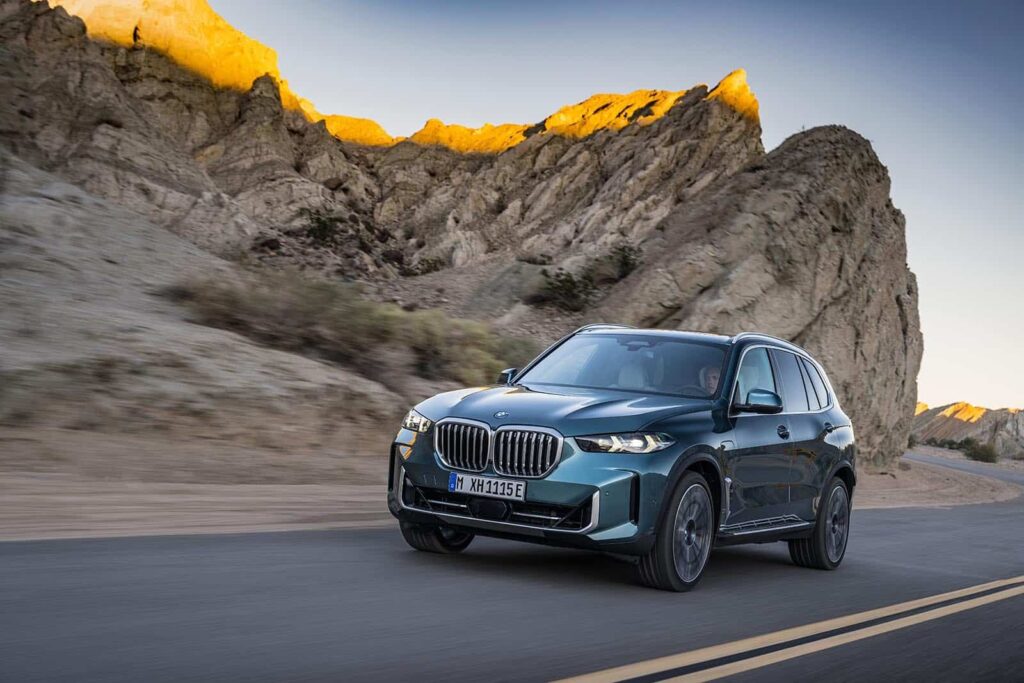
7. **BMW X5**The BMW X5 presents another cautionary tale for those drawn to luxury SUVs, proving that German engineering doesn’t always equate to impeccable reliability, particularly in the used market. While it’s loved for its prestige and sporty handling, mechanics agree that the ownership experience can quickly turn frustrating due to persistent and expensive problems once the vehicle is out of its factory warranty.
According to CarBuzz, the X5 frequently struggles with significant mechanical issues, including “oil leaks, unreliable air suspension and frequent electronic problems that are expensive to fix.” These aren’t minor wear-and-tear items; they are complex failures that often require specialized tools and deep diagnostic expertise. Greg Damon specifically points out that the most significant problem with European cars like BMW is how intricate and costly repairs become once they are no longer covered by warranty.
Owners are often taken aback by the difficulty in sourcing affordable parts and finding local mechanics experienced enough with the X5’s unique and sophisticated systems. The air suspension problems, in particular, are “especially expensive and common,” turning even minor wear into major repairs. Ignoring small oil leaks or ride problems can lead to thousands in repair bills, making this seemingly fancy SUV a considerable money pit for budget-conscious buyers.
For mechanics, working on a used BMW X5 often means dealing with complex puzzles that challenge even the most experienced technicians. The constant stream of electronic malfunctions, combined with the predictable suspension issues and pervasive oil leaks, makes X5 ownership less about enjoyable driving and more about continuous financial support for specialized BMW specialists. This makes it a vehicle that, while initially appealing, promises a future of expensive and recurrent mechanical woes.
Continuing our journey through the automotive scrapyard of regret, we now delve into seven more vehicles that mechanics, leveraging years of hands-on experience, consistently advise against buying used. These models, often masked by attractive initial prices, frequently conceal a pattern of costly breakdowns, inherent design flaws, and repair nightmares. Our aim is to empower you with objective insights, cutting through marketing hype to reveal the unvarnished truths of long-term vehicle ownership.
Car Model Information: 2019 BMW X5 xDrive40i
Name: BMW X5
Manufacturer: BMW
Class: Mid-size,luxury vehicle,crossover SUV
BodyStyle: SUV
Production: 1999–present
Layout: Front-engine, four-wheel-drive layout,Front-engine, rear-wheel-drive layout
Categories: 2000s cars, 2010s cars, All-wheel-drive vehicles, All articles with unsourced statements, Articles with short description
Summary: The BMW X5 is a mid-size luxury crossover SUV produced by BMW. The X5 made its debut in 1999 as the E53 model. It was BMW’s first SUV. At launch, it featured all-wheel drive and was available with either a manual or automatic gearbox. The second generation was launched in 2006, and was known internally as the E70. The E70 featured the torque-split capable xDrive all-wheel drive system mated to an automatic gearbox. In 2009, the X5 M performance variant was released as a 2010 model.
BMW marketed the X5 officially as a “Sports Activity Vehicle” (SAV), rather than an SUV, to indicate its on-road handling capability despite its large dimensions. The X5 signaled a shift away from the utilisation of body-on-frame construction, in favour of more modern monocoque chassis construction. Although the Mercedes-Benz M-Class was introduced more than a year prior to the X5, the X5 was the first to utilise a monocoque chassis. The M-Class used body-on-frame construction until its second generation.
The X5 is primarily manufactured in North America, at BMW Group Plant Spartanburg. Assembly operations also took place in Russia by Avtotor until February 2022, along with operations in India, Indonesia, Malaysia, and Thailand. The X5 is also modified for armoured security versions, at the BMW de México Toluca plant.
The automaker’s SAV series, which was started by the X5, has expanded with derivations of other number-series BMWs. This began in 2003 with the X3, and continued in 2008 with the X6 (which shares its platform with the X5).
Get more information about: BMW X5
Buying a high-performing used car >>>
Brand: BMW Model: X5
Price: $29,950 Mileage: 93,386 mi.
Read more about: The Apex of Automotive Opulence: Unveiling 2025’s Most High-End Luxury Sedans

8. **Nissan Altima**The Nissan Altima, while often lauded for its fuel efficiency, harbors a significant weakness: chronic transmission and engine trouble, particularly in models from 2013 to 2015. This era saw widespread use of Nissan’s problematic Continuously Variable Transmission (CVT). CoPilot reports these years “suffer from major transmission problems due to Nissan’s CVT design, frequent engine issues and even steering failures,” often “well before 100,000 miles.”
These CVT transmissions, as Greg Damon emphasizes, are “expensive and complicated to repair.” Owners commonly report shuddering, slipping, and unresponsiveness, transforming the driving experience into a frustrating ordeal. The replacement cost can often approach the car’s market value. Beyond the CVT, these Altimas also face frequent engine issues and critical steering failures, posing considerable safety risks.
Considering the high potential for long-term costs, significant safety concerns, and documented component fragility, a used Nissan Altima from this era is a vehicle mechanics universally advise against. Buyers are encouraged to “look for other sedans with fewer big-ticket repair risks,” ensuring initial savings aren’t negated by expensive repairs.
Car Model Information: 2023 Nissan Altima SR FWD
Name: Nissan Altima
Caption: 2024 Nissan Altima SR (L34; US)
Manufacturer: Nissan
Aka: Nissan Bluebird
Production: 1992–present
Class: Compact car
Predecessor: Nissan Bluebird,Nissan Stanza
ModelYears: 1993–present
Categories: 2000s cars, 2010s cars, 2020s cars, All-wheel-drive vehicles, All Wikipedia articles written in American English
Summary: The Nissan Altima is a mid-size car manufactured by Nissan since 1992. It is a continuation of the Nissan Bluebird line, which began in 1955.
The Altima has historically been larger, more powerful, and more luxurious than the Nissan Sentra but less so than the Nissan Maxima. The first through fourth-generation cars were manufactured exclusively in the United States and officially sold in North and South America, along with the Middle East and Australia. For other markets, Nissan sold a related mid-size sedan called the Nissan Teana which was between the Altima and Maxima in terms of size. In 2013, the Teana became a rebadged version of the fifth-generation Altima.
The name “Altima” was originally applied to a top trim line of the Nissan Leopard for the Japanese market in 1986, and then to the Nissan Laurel Altima mid-size car sold in Central America and the Caribbean before 1992. In 1992, Nissan discontinued the Stanza which was a Nissan Bluebird clone, replacing it with the US-built Altima, while remaining a compact car. The first Altima was produced in June 1992, as a 1993 model. All Altima models for the North American market were built in Smyrna, Tennessee, until June 2004, when Nissan’s Canton, Mississippi plant also began producing the model to meet high demand.
Get more information about: Nissan Altima
Buying a high-performing used car >>>
Brand: Nissan Model: Altima
Price: $19,988 Mileage: 33,732 mi.
Read more about: Don’t Get Stuck in Reverse: 12 Car Models That Will Leave You Wishing for a Do-Over
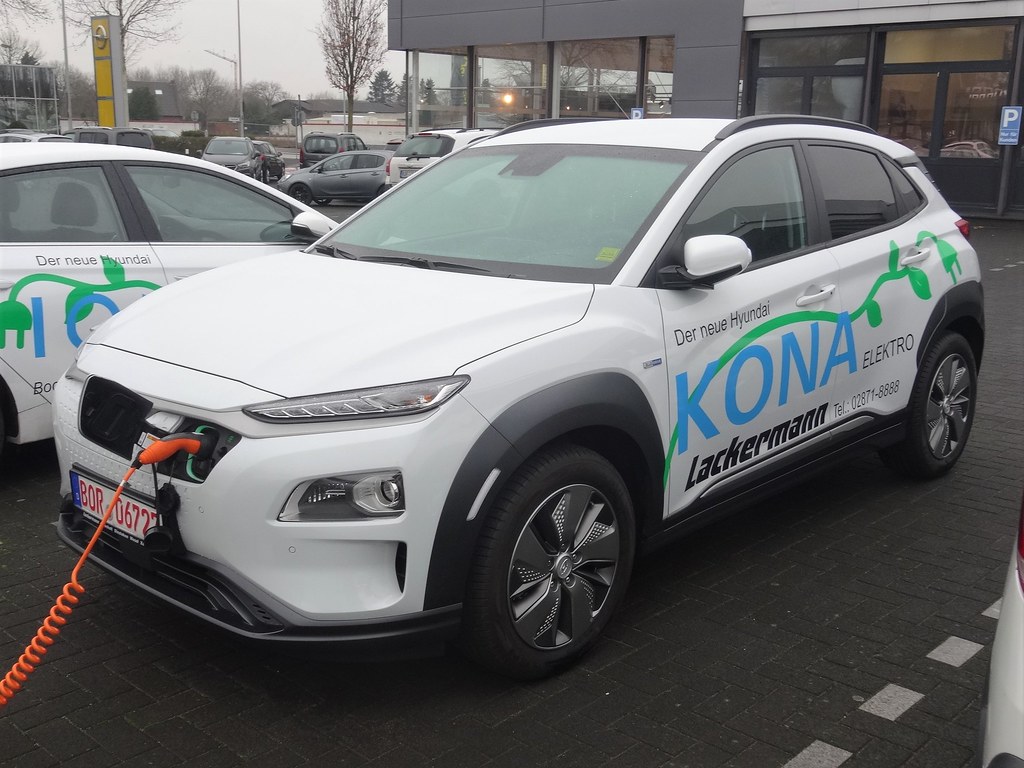
9. **Hyundai Kona**For American consumers considering small SUVs, the Hyundai Kona, particularly models from 2018 and 2021, warrants extreme caution. Despite its appealing compact size and contemporary styling, mechanics pinpoint dangerous engine defects and persistent electrical problems. Reports from CoPilot and Vehicle Accident Injury document issues from unsettling knocking noises to complete engine failure.
Owners of these Kona model years detail engine-related complaints, including “abnormal knocking noises, engine stalling and even complete engine failures tied to faulty piston rings.” These are serious internal flaws leading to catastrophic breakdowns. Greg Damon observes “Korean models sometimes hide complicated reliability issues below the surface,” making costly rectification necessary, with “replacement engines running into the thousands if out of warranty.”
Ultimately, a used Hyundai Kona from these problematic years carries a high risk of unpredictable and costly repairs. For shoppers prioritizing peace of mind and predictable expenses, the Kona presents too many potential liabilities, making it a model mechanics consistently recommend avoiding.
Car Model Information: 2024 Hyundai KONA EV SEL
Name: Hyundai Kona
Caption: Hyundai Kona N Line (SX2)
Manufacturer: Hyundai Motor Company
Aka: Hyundai Kauai (Portugal)
Production: 2017–present
ModelYears: 2018–present
Class: Subcompact crossover SUV
BodyStyle: SUV
Layout: ubl
Categories: 2020s cars, All-wheel-drive vehicles, All Wikipedia articles in need of updating, Articles containing Chinese-language text, Articles containing Korean-language text
Summary: The Hyundai Kona is a subcompact crossover SUV produced by the South Korean manufacturer Hyundai. The first-generation Kona debuted in June 2017 and the production version was revealed later that year. It is positioned between the Venue or Bayon and the Tucson in Hyundai crossover SUV line-up. The battery electric version called the Kona Electric (or Kona EV) was first launched in South Korea during the first half of 2018 and rolled out gradually worldwide afterwards.
Get more information about: Hyundai Kona
Buying a high-performing used car >>>
Brand: Hyundai Model: Kona
Price: $25,999 Mileage: 16,840 mi.
Read more about: Don’t Get Stuck in Reverse: 12 Car Models That Will Leave You Wishing for a Do-Over
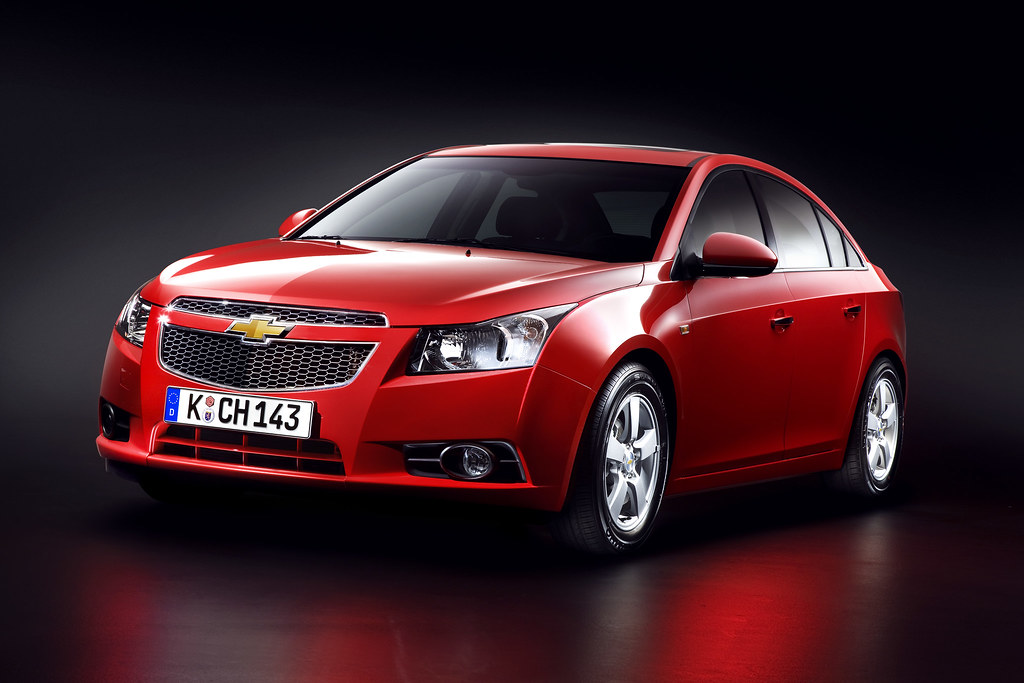
10. **Chevrolet Cruze**The Chevrolet Cruze, once promoted for affordability and efficiency, has become a regular presence in mechanics’ service bays, particularly models from 2012 and earlier. Owners routinely contend with a trio of engine, transmission, and coolant problems. Kelley Blue Book indicates the Cruze is “prone to leaks, electrical issues and stalling,” with repair expenses frequently “easily topp[ling] the vehicle’s remaining value.”
Mechanics consistently observe “recurring coolant leaks, failed water pumps and rough transmissions” as common ailments. Coolant leaks rapidly escalate to engine overheating, while transmission problems manifest as jerky shifts, power loss, and costly overhauls. The frequency and expense lead mechanics to conclude such repairs “just aren’t worth it.”
The Chevrolet Cruze serves as a potent reminder that a low initial purchase price does not guarantee low ownership costs. Given its documented history of significant mechanical flaws and repair costs often exceeding its value, mechanics routinely suggest alternatives like the Toyota Corolla or Honda Civic, which “have better records and will likely cost less to keep on the road.”
Car Model Information: 2014 Chevrolet Cruze 1LT
Name: Chevrolet Cruze
Caption: 2017 Chevrolet Cruze LT sedan
Manufacturer: General Motors
Aka: unbulleted list
Production: unbulleted list
ModelYears: 2011–2019 (North America),2026 (Middle East)
Class: Compact car
Layout: Front-engine, front-wheel drive
Predecessor: unbulleted list
Successor: unbulleted list
Categories: 2010s cars, 2020s cars, ANCAP small family cars, All articles containing potentially dated statements, All articles with dead external links
Summary: The Chevrolet Cruze is a compact car produced by General Motors from 2008 through 2023. It was designated as a globally developed, designed, and manufactured four-door compact sedan, complemented by a five-door hatchback body variant from 2011, and a station wagon in 2012. The Cruze replaced several compact models, including the Chevrolet Optra which was sold internationally under various names, the Chevrolet Cobalt sold exclusively in North America, and the Australasian-market Holden Astra.
The Cruze was released in 2008 for the South Korean market as the Daewoo Lacetti Premiere prior to the adoption of its international name in 2011, when the Daewoo brand was discontinued. In Australasia, the model was sold between 2009 and 2016 as the Holden Cruze. In 2016, the Cruze sedan was restyled and renamed for the Australasian market as the Holden Astra Sedan, as a sedan complement to the Holden Astra family.
Due to the market shift towards SUVs and decreasing sales, the Cruze has been gradually phased out. Production of the Cruze in South Korea ended in 2018 as part of restructuring of GM Korea, which in turn ceased supply of the Holden Astra Sedan to Australasia. In the United States and Mexico, production ended in 2019, while production in China ended in 2020. Production continued in Argentina until 2023. It was replaced by the Monza in China, which is known as the Cavalier in Mexico.
In 2025, the Cruze was revived as a rebadged Chevrolet Monza for the Middle East.
Previously, the nameplate has been used for a version of a subcompact hatchback car produced under a joint venture with Suzuki from 2001 to 2007, and was based on the Suzuki Ignis.
Get more information about: Chevrolet Cruze
Buying a high-performing used car >>>
Brand: Chevrolet Model: Cruze
Price: $7,791 Mileage: 88,975 mi.
Read more about: Unlocking Your Ride: 14 ‘Secret’ Car Features Most Drivers Don’t Know About
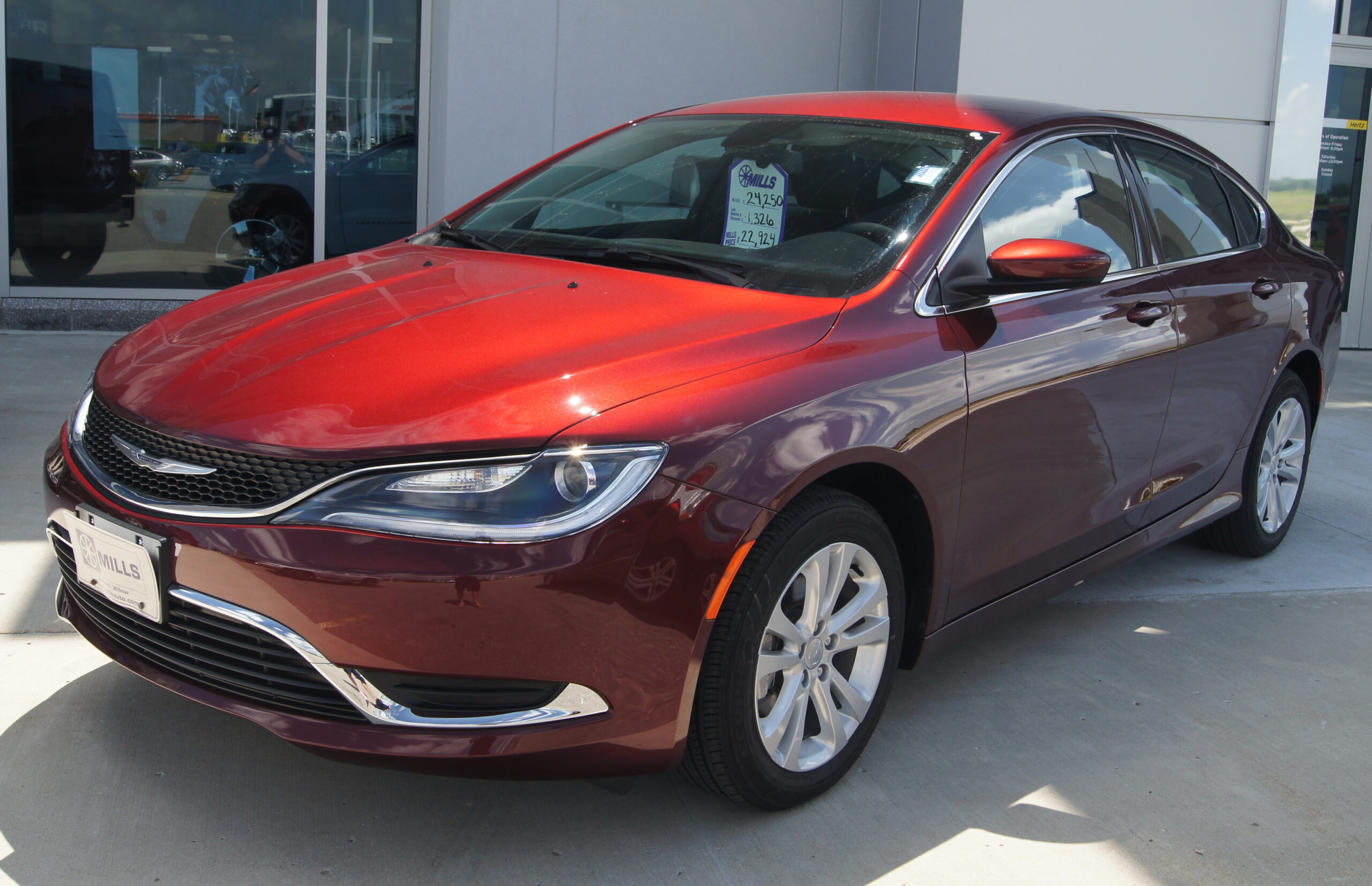
11. **Chrysler 200**The Chrysler 200, initially positioned as a sensible mid-size sedan, rapidly established a notorious reputation among mechanics for problematic engineering. Its most prominent source of failure is the nine-speed automatic transmission, so flawed it significantly undermined market appeal. This transmission “doesn’t just shift gears; it contemplates them, argues with them, and occasionally decides that neutral is the only emotionally safe space.”
Owners frequently report a dismal driving experience, characterized by “shifts so hard you’d think the car was having an existential crisis,” often with severe jerking. These critical failures commonly occur early in the vehicle’s lifespan, frequently “right around the time you’ve gotten comfortable with your monthly payments,” leading to frustration and substantial repair bills.
Beyond the transmission, the electrical system is also susceptible to malfunctions, “throwing random warning lights like confetti at a very depressing celebration.” Diagnosing these elusive electrical problems is both time-consuming and expensive. For prospective buyers, the mechanics’ warning is direct: “sometimes low miles just mean the previous owner gave up early.”
Car Model Information: 2015 Chrysler 200 S
Name: Chrysler 200
Manufacturer: Chrysler
Production: 2010–2016
ModelYears: 2011–2017
Assembly: Sterling Heights, Michigan
Class: Mid-size car
Sp: us
Predecessor: Chrysler Sebring
Categories: 2010s cars, All articles with dead external links, All articles with unsourced statements, Articles with dead external links from July 2020, Articles with permanently dead external links
Summary: The Chrysler 200 is a mid-size sedan that was manufactured and marketed by Chrysler from model years 2011 to 2017 across two generations in four-door sedan and two-door convertible (first generation only) body styles.
The 200 nameplate debuted on the 200C, a prototype hybrid vehicle shown at the 2009 North American International Auto Show in Detroit and based on the Chrysler 300. The 200C concept was engineered to accept either traditional gasoline, hybrid or full-electric powertrains.
Get more information about: Chrysler 200
Buying a high-performing used car >>>
Brand: Chrysler Model: 200
Price: $6,900 Mileage: 122,275 mi.
Read more about: From Garage Glory to Budget Buys: Iconic Cars That Lost Their Collectible Shine and Are Now Practically Worthless
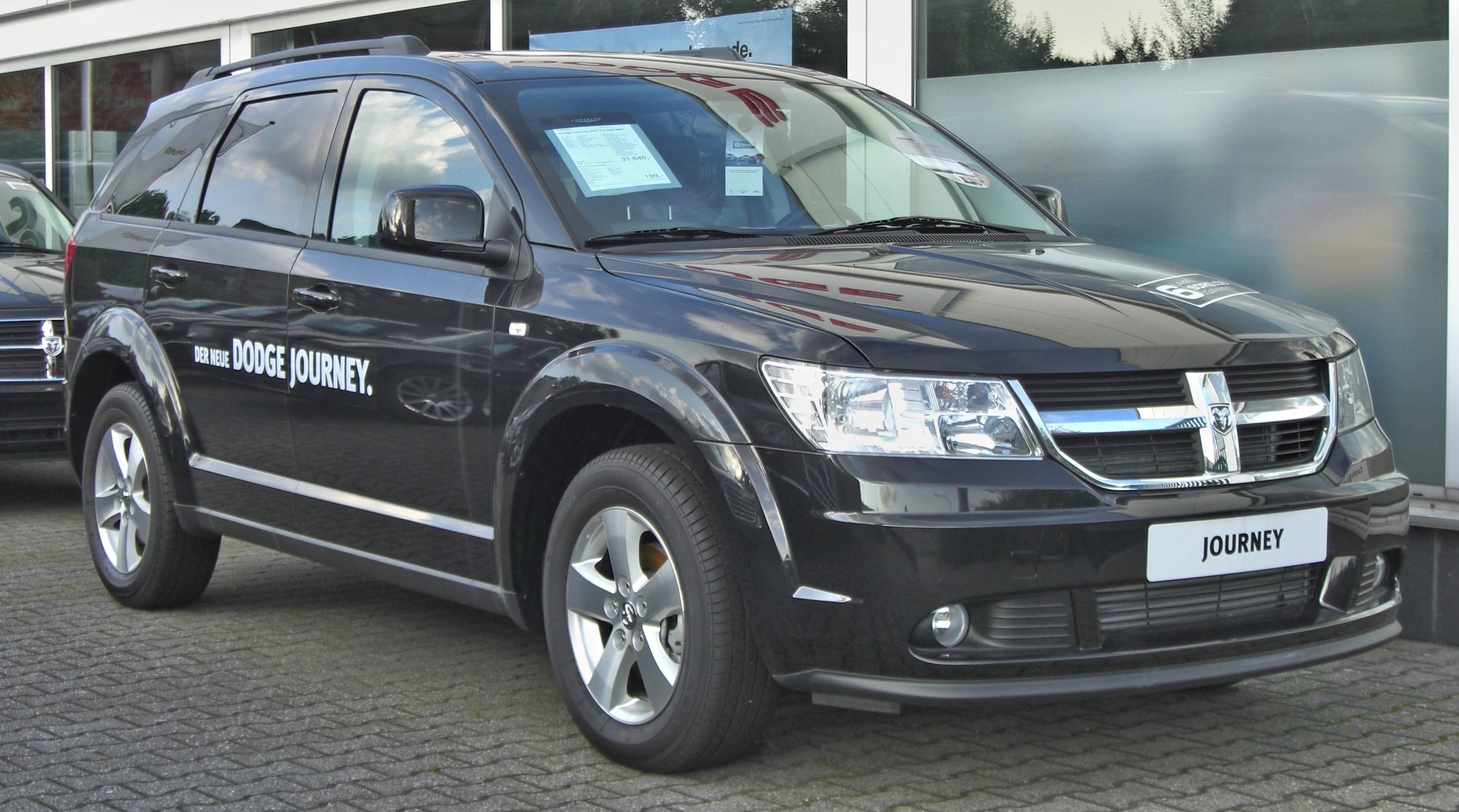
12. **Dodge Journey**Marketed as an “affordable family SUV,” the Dodge Journey illustrates that a low initial price often masks substantial hidden costs and compromises in reliability. This vehicle, especially earlier models, has a well-documented history of mechanical issues that routinely bring it into mechanics’ shops, casting serious doubt on its long-term value and safety.
A particularly troubling aspect is its brake system, described as having “all the reliability of a carnival ride operated by someone who learned their trade from YouTube videos.” This, coupled with a suspension system that often feels “designed for a completely different planet,” compromises driving confidence. Owners of 2009 models, in particular, often inherited a problematic beta version of the vehicle’s engineering.
Engine problems, which tend to “manifesting just as you’ve convinced yourself that maybe this car isn’t so bad after all,” represent another layer of financial burden. These issues result in significant repair bills, quickly transforming initial affordability into a costly trap. The Journey underscores the risks of selecting a vehicle solely based on sticker price without diligent reliability investigation.
Car Model Information: 2019 Dodge Journey SE
Name: Dodge Journey
Caption: 2012 Dodge Journey
Manufacturer: Dodge
Aka: Fiat Freemont,Dodge JC (Japan),Dodge JCUV (China)
Production: 2008–2020
ModelYears: 2009–2020,2011–2015 (Freemont)
Assembly: Toluca, Mexico
Designer: Ryan Nagode
Class: Mid-size crossover SUV
BodyStyle: SUV
Platform: Mitsubishi GS platform
Related: Chrysler 200,Chrysler Sebring,Dodge Avenger
Layout: Front-engine, front-wheel-drive layout
Engine: ubl
Transmission: Ultradrive#40TES/41TES
Wheelbase: 2890 mm
Abbr: on
Order: flip
Length: 192.4 in
Width: 72.2 in
Height: 66.6 in
Weight: 3818 lb
Predecessor: Fiat Ulysse,Fiat Croma
Successor: Dodge Journey (2021)
Categories: 2010s cars, 2020s cars, All-wheel-drive vehicles, All articles with dead external links, All articles with unsourced statements
Summary: The Dodge Journey is a mid-size crossover SUV manufactured and marketed by Fiat Chrysler Automobiles’ Dodge brand for model years 2009 to 2020 over a single generation, with a facelift for the 2011 model year. The Journey was styled by Ryan Nagode, and was marketed globally in both left- and right-hand drive, including as the Fiat Freemont.
Internally identified as the JC49, the Journey shares FCA’s global D-segment platform with the Dodge Avenger and a nearly identical wheelbase to the outgoing short-wheelbase (SWB) Dodge Caravan.
Having debuted at the 2007 Frankfurt Motor Show, the Journey subsequently appeared at the 2009 Frankfurt Motor Show. All models were manufactured in Mexico at FCA’s Toluca Assembly facility, with just over 1.1 million manufactured before production ended in 2020.
Get more information about: Dodge Journey
Buying a high-performing used car >>>
Brand: Dodge Model: Journey
Price: $13,961 Mileage: 83,381 mi.
Read more about: The Unforgettable Moments: 11 Stars Who Exploded the Internet with a Single Photo, and the Wild Rides That Followed!
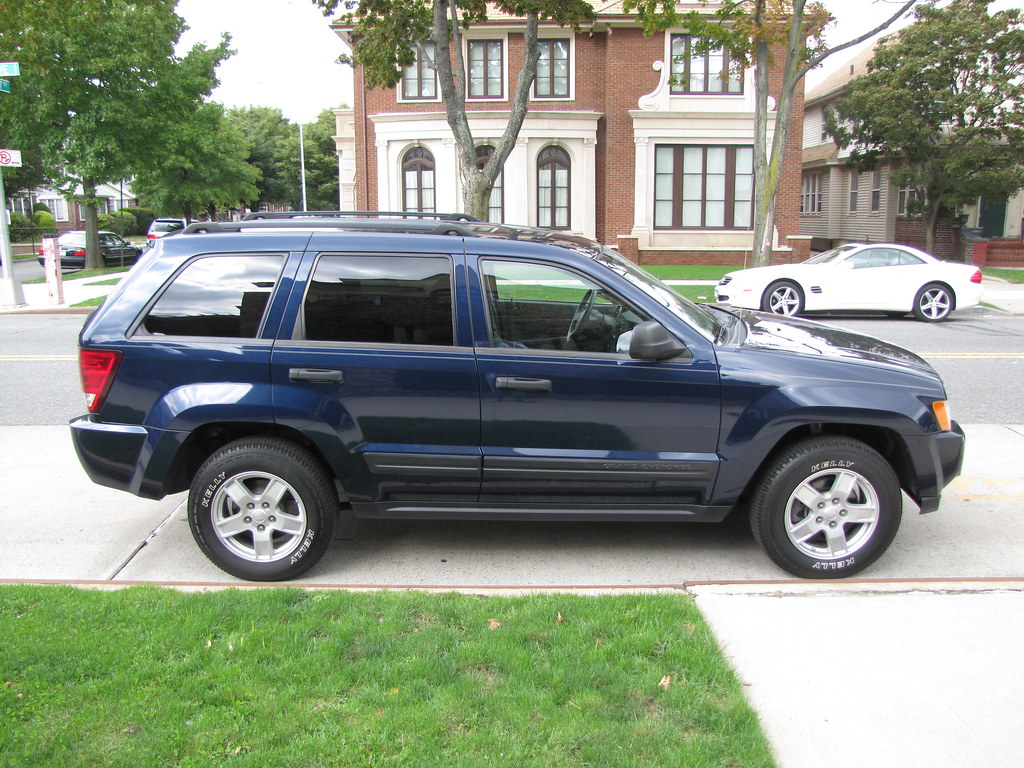
13. **Jeep Grand Cherokee**The Jeep Grand Cherokee, despite leveraging a legacy of rugged capability, has earned a definitive spot on mechanics’ “never buy used” lists due to consistent electrical issues, prevalent powertrain problems, and notably high ownership costs. While the brand evokes adventure, many used Grand Cherokee owners face frequent service bay visits. As one mechanic candidly stated, “I personally wouldn’t recommend any Jeep, but the Grand Cherokee takes the cake for the worst of the worst.”
Among the most widespread issues are “electrical issues, particularly with its infotainment system and wiring.” These glitches lead to unreliable screens, erratic controls, and significant operational disruptions. Diagnosing such intermittent electrical faults demands specialized expertise and quickly escalates into expensive repair bills.
Beyond electronics, “Engine and transmission problems also come up fairly often, leading to costly repairs.” These critical powertrain components’ frequent failures indicate a fundamental deficiency in long-term durability. Compared to competitors, the Grand Cherokee “just isn’t reliable,” falling short on a crucial metric for used car buyers.
Car Model Information: 2019 Subaru Outback 3.6R Limited
Name: Jeep Grand Cherokee
Manufacturer: Jeep
Production: 1992–present
ModelYears: 1993–present
Class: unbulleted list
BodyStyle: sport utility vehicle
Layout: unbulleted list
Chassis: Vehicle_frame#Uniframe
Categories: 2000s cars, 2010s cars, 2020s cars, All-wheel-drive vehicles, All Wikipedia articles written in American English
Summary: The Jeep Grand Cherokee is a range of mid-sized sport utility vehicles produced by American manufacturer Jeep. At its introduction, while most SUVs were still manufactured with body-on-frame construction, the Grand Cherokee has used a unibody chassis from the start.
Get more information about: Jeep Grand Cherokee
Buying a high-performing used car >>>
Brand: Jeep Model: Grand Cherokee
Price: $21,995 Mileage: 77,376 mi.
Read more about: 12 Vehicles That Will Test Your Patience (and Your Wallet) with Never-Ending Electronic Glitches
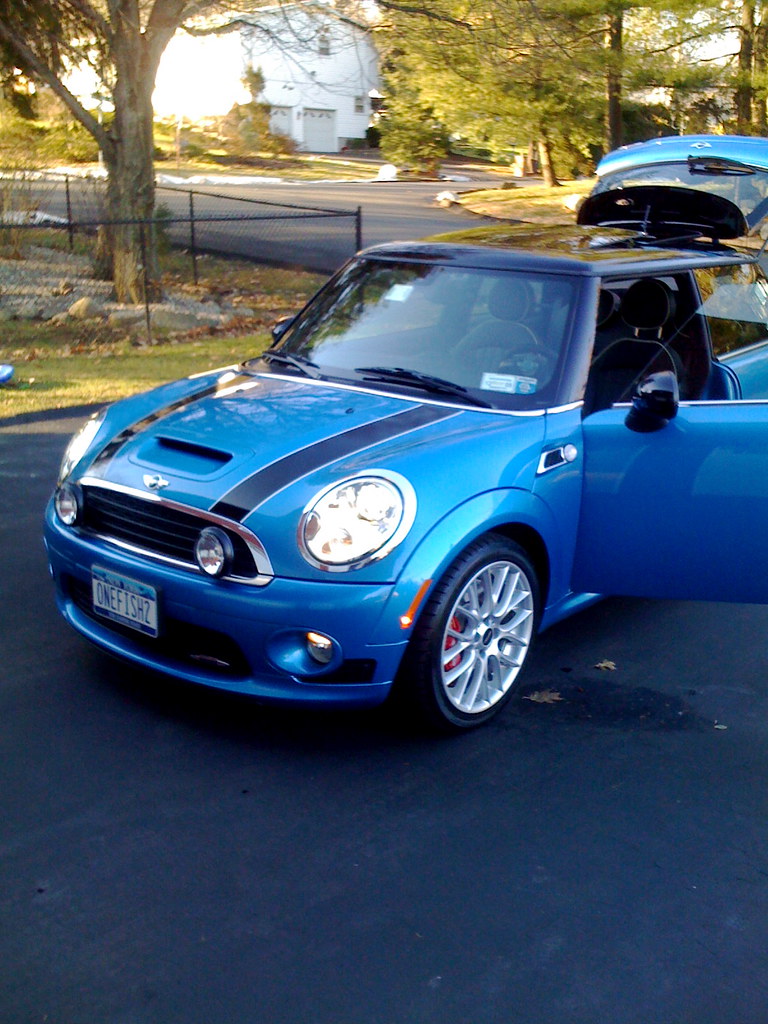
14. **Mini Cooper**The Mini Cooper, celebrated for its distinctive styling and agile handling, offers undeniable charm, yet mechanics frequently observe that “cute doesn’t equal reliable.” This automotive fashion accessory operates “with all the mechanical reliability of a designer handbag – it looks great, but you probably shouldn’t depend on it for anything important.” The allure often rapidly diminishes when owners encounter persistent, costly mechanical issues.
Among its most infamous problems are “turbocharger failures” which are “so common that they’ve probably contributed significantly to the turbocharger aftermarket industry.” These failures lead to substantial and unexpected repair bills. Furthermore, “Oil leaks are a feature, not a bug,” meaning many Mini Coopers consistently mark their territory, necessitating frequent fluid top-offs and costly gasket replacements.
The cooling system also represents a recurrent nightmare, with “cooling system breakdowns [adding] an element of excitement to every drive.” The intricate design means even minor maintenance, like “changing a light bulb requires removing half the engine,” dramatically inflates labor costs. This complexity translates into routine maintenance expenses that can “cost more than some people’s monthly rent.”
**The Bottom Line: Choose Wisely, Drive Safely, Avoid These Disasters**
As we conclude this comprehensive look into automotive models that mechanics unequivocally advise against buying used, the central message is clear: while the upfront appeal of a discounted price is compelling, the true cost of vehicle ownership extends far beyond the initial transaction. The cars detailed throughout this article uniformly exhibit a pattern of severe mechanical failures, complex and expensive repairs, and a frustrating tendency to deplete both owners’ financial resources and patience. These are not isolated incidents, but systemic issues earning them a notorious reputation among those with intimate automotive knowledge.
Car Model Information: 2022 MINI Hardtop Cooper S
Sp: uk
Caption: 1959 Morris Mini-Minor (first one built)
Name: Mini
Aka: Austin 850,Rover Mini,Austin Cooper,Austin Mini,Austin Partner,Austin Seven,Innocenti Mini,Leyland Mini,Morris 850,Morris Mascot,Morris Mini Minor,Riley Elf,Wolseley 1000 (South Africa),Wolseley Hornet
Layout: Front-engine, front-wheel-drive layout
Manufacturer: British Motor Corporation,British Leyland,Rover Group
Production: 1959–2000 (5.38 million)
Class: City car
BodyStyle: sedan (car),convertible,Station wagon,sedan delivery,coupe utility
Engine: BMC A-series engine,Straight-four engine
Designer: Alec Issigonis,John Sheppard (car designer)
Transmission: 4-speed manual,AP automatic transmission,5-speed manual (optional extra on some later models)
Length: cvt,cvt,cvt
Width: cvt
Height: cvt
Weight: cvt
Wheelbase: cvt,cvt
Related: Mini Moke,Austin Metro,Innocenti Mini,Mini Wildgoose,Mini Marcos
Successor: Austin Metro,Mini Hatch
Assembly: Panmure, New Zealand
Categories: 1960s cars, 1970s cars, 1980s cars, 1990s cars, 2000s cars
Summary: The Mini is a very small two-door, four-seat car, produced for four decades over a single generation, with many names and variants, by the British Motor Corporation (BMC) and its successors British Leyland and the Rover Group, and finally (briefly) under BMW ownership. Minis were built as fastbacks, estates, convertibles, and various other body styles. Minus a brief 1990s hiatus, from 1959 into 2000, an estimated 5.38 million of all variations combined were built, and the Mini’s engines also powered another 2 million Mini Metros, though the Mini eventually outlasted its successor.
Initially, the Mini was marketed under the Austin and Morris names, as the Austin Seven and Morris Mini-Minor; the Austin Seven was renamed Austin Mini in 1962 and Mini became a marque in its own right in 1969. Retrospectively, the car is known as the “Classic Mini” to distinguish it from the modern MINI family of vehicles produced since 2001 by German carmaker BMW, who took ownership of the Mini name following the sale of Rover Group in 2000.
This distinctive two-door car was designed for BMC by Sir Alec Issigonis. Its space-saving transverse engine and front-wheel drive layout – allowing 80% of the area of the car’s floorpan to be used for passengers and luggage – influenced a generation of car makers. The front-wheel-drive, transverse-engine layout were used in many other “supermini” style car designs such as Honda N360 (1967), Nissan Cherry (1970), and Fiat 127 (1971). The layout was also adapted for larger subcompact designs. In 1999, the Mini was voted the second-most influential car of the 20th century, behind the Ford Model T, and ahead of the Citroën DS and Volkswagen Beetle. It is also considered an icon of 1960s British popular culture.
The Mini Mark I had three major UK updates: the Mark II, the Clubman, and the Mark III. Within these was a series of variations, including an estate car, a pick-up, a van, and the Mini Moke, a jeep-like buggy. The performance versions, the Mini Cooper and Cooper “S”, were successful as both race and rally cars, winning the Monte Carlo Rally in 1964, 1965, and 1967. The Mini was manufactured in England at the Longbridge plant in Birmingham located next to BMC’s headquarters and at the former Morris Motors plant at Cowley, as well as in Australia (Victoria Park/Zetland BMC Australia factory) and later also in Spain (Authi), Belgium, Italy (Innocenti, as the Innocenti Mini), Chile, Malta, Portugal, South Africa, Uruguay, Venezuela, and Yugoslavia (IMV). In 1980, British Leyland launched the Mini’s follow-up, the Austin Metro, however the Mini outlasted it and continued to be produced at Longbridge until October 2000.
Get more information about: Mini
Buying a high-performing used car >>>
Brand: Mini Model: Cooper
Price: $20,199 Mileage: 29,563 mi.
Read more about: Totally Rad Reels: A BuzzFeed Journey Through the Best Movies of the ’80s
By diligently prioritizing thorough research and judiciously heeding the seasoned advice of automotive professionals, you can confidently navigate the often-treacherous used car market. Avoiding these mechanical disasters can spare you thousands in unforeseen expenses, liberate countless hours in service department waiting rooms, and circumvent the automotive-related stress that leads individuals to address their vehicles in exasperated tones. Selecting the right used car translates into peaceful drives, predictable maintenance, and reliability that allows you to focus on life’s more meaningful aspects—your destination, not agonizing over arrival. Equip yourself with this invaluable knowledge, make informed choices, and guarantee your next used car serves as enduring satisfaction, not a perpetual financial burden.

